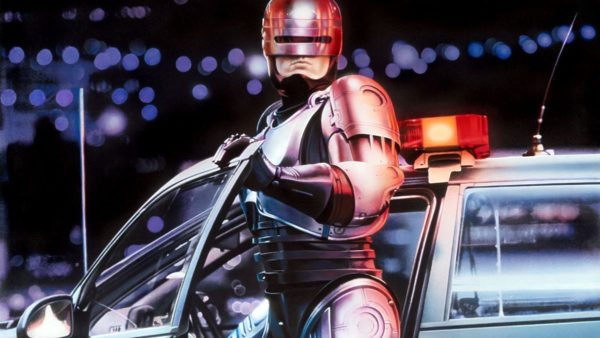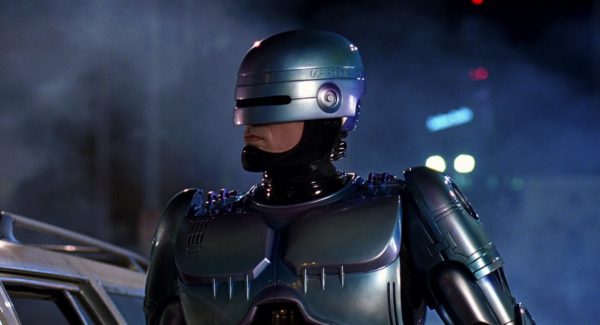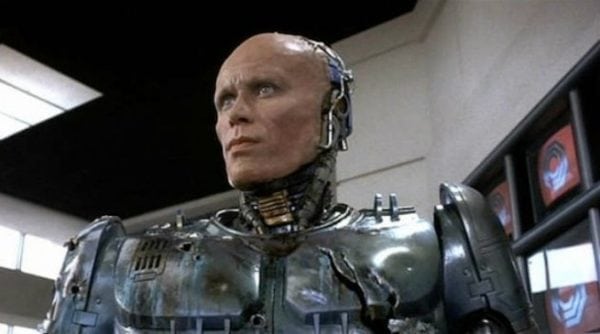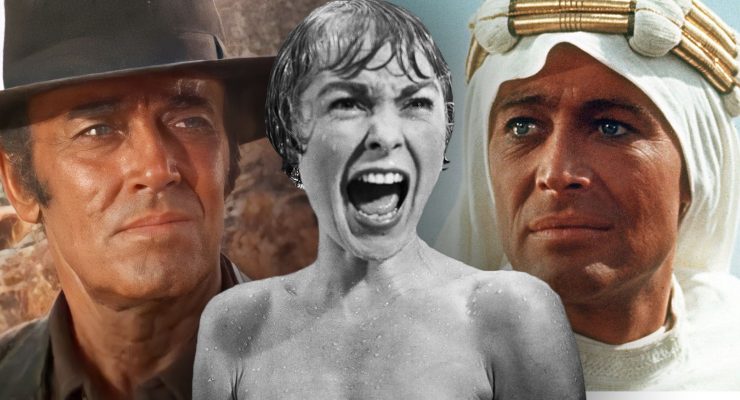As RoboCop celebrates its 35th anniversary, Hasitha Fernando dives into the film’s journey to the screen…
Following the news of Peter Weller’s return for the video game RoboCop: Rogue City earlier this month, this week we’re look back at the seminal sci-fi classic that started it all – RoboCop. Looking at the enduring legacy the visceral actioner spawned, one might be inclined to assume that those involved in the film’s production were also aware that they were part of something special, but nothing could be further from the truth. So, without further ado, here’s the story of what took place behind-the-scenes 35 years back during the making of RoboCop.
A bare-bones script for the movie was conceived in the early 1980s by Universal Pictures junior executive and script reader Edward Neumeier. Neumeier who had always been fascinated with robots was struck with a novel idea while unofficially working on the production of Blade Runner, which was shooting on the Warner Bros. backlot. He aspiring writer then sat down and churned out a 40-page treatment based on the concept he conceived, which he aptly titled RoboCop, “I had a vision of a far-distant, Blade Runner-type world where there was an all-mechanical cop coming to a sense of real human intelligence.”
Whilst flipping through story submissions, Neumeier happened across a robot-themed rock music video sent by one Michael Miner. Intrigued by the effort Neumeier met up with Miner, and the pair established a working partnership to exchange their ideas. “I was playing with an idea called Supercop, about a character who has an accident and then gets hooked up to an appliance that enhances his powers. We were writing RoboCop when James Cameron’s Terminator hit the theatres, but we both waited until we finished off our script before we saw that film,” said Miner during one his behind-the-scenes interviews.
The duo worked together the next few months trying to fine tune their script in-between their busy work shifts. Neumeier and Miner were dead set on satirizing the cut-throat corporate culture of the Reagan era by incorporating elements into the narrative, as well as, including in-film commercial breaks which cynically deconstruct the decadent lifestyle of that time period.
By early 1985 the writers had a satisfying first draft of their script which they shopped to multiple studios and industry friends. Titled RoboCop: The Future of Law Enforcement, the draft generated a favorable response from the folks over at Orion Pictures and producer Jon Davison (Airplane!), but they requested a rewrite of the script. Originally Jonathan Kaplan (The Accused) was eyed to helm the project but after Kaplan left direct the Mathew Broderick headlined Project X, the producers approached the likes of David Cronenberg (The Fly) and Alex Cox (Repo Man), but they too weren’t interested.
Speaking about the gruelling director selection process, producer Jon Davison had this to say regarding the gruelling director selection process, “We basically went through the list of every half-way decent American director and each one of them turned it down. I guess everybody had reservations about the project because the title sounded so silly. And seeing the name RoboCop on their resume was probably the last thing they wanted.”
All out of options Orion Pictures executive Barbra Boyle suggested the name Paul Verhoeven as a possible candidate. Verhoeven was, at that time, an up-and-coming Dutch director who had received some acclaim for his work on romance-thriller Soldier of Orange and historical adventure flick Flesh + Blood, but one casual glance at the script was all it took for him to reject it.
“When I got my hands on the script of RoboCop and read it, I thought it was extremely silly and stupid. I threw it on the floor saying ‘I will never shoot this kind of rubbish’ and my wife picked it up, went through it and somehow convinced me to do it,” recalls Verhoeven during a backstage tête-à-tête. Davison, Neumeier and Verhoeven held a meeting shortly after, at Culver Studio’s Mansion House and the trio decided to get the ball rolling on their project.
Finding the right actor to play the lead role of Alex Murphy/RoboCop proved to be much harder than Verhoeven & co. expected. After an exhaustive search spanning over 6-8 months, considering actors such as Arnold Schwarzenegger, Rutger Hauer, Michael Ironside and Tom Berenger, they finally had the ideal candidate for their project – Peter Weller.
Weller was a relative unknown at that time, but had developed a cult-fanbase, following his performance on The Adventures of Buckaroo Banzai Across the 8th Dimension. And the fact that Weller came from a martial arts background, worked in his favour, since much of his performance as the titular cyborg consisted of very deliberate miming type movements which required good body control.
Assisting Weller on the process of ‘becoming’ RoboCop was French-Israeli mime Moni Yakim and Weller had this to say about the guy during a Q & A with Ain’t It Cool News, “I always say Moni singlehandedly saved the film and that’s the truth. We were several weeks in to production, and the suit Rob Bottin designed took ten hours to apply plus I still hadn’t figured out how to move in that thing. It was a disaster. Paul was flipping-out, Rob was pissed and Orion was threatening to pull the plug. Then Moni was flown in from Paris on my request and one of the first things he tell me is to watch Sergei Eisenstein’s historical epic Ivan the Terrible. At first it seemed to me like bad opera with the exaggerated theatricality, but then it hit me. That’s what I was supposed to become; this abstraction, this beast. And the character, his thoughts and motivations fell into place subsequently.”
Stephanie Zimbalist was initially cast to play Murphy’s partner Anne Lewis, but the actress had to pull out unexpectedly due to her commitments to Remington Steele. Once again there was a mad scramble to find the right female lead, and after several unsuccessful auditions they settled on Carrie actress Nancy Allen. Theatre actor Kurtwood Smith joined the cast as the villainous Clarence Boddicker, crime-lord of the Detroit City while Ronny Cox, who’d made a career playing good guys in movies took on the role of corporate slime-ball Dick Jones.
RoboCop’s story required an extensive usage of special effects to pull off the over-the-top violence, futuristic setting and of course the sleek-mechanical suit that’d be worn by Weller. To this end the uber-talented Rob Bottin, who had worked previously on such classics as The Thing and Legend, joined the crew to bring to life the demanding requirements of the movie. RoboCop features one of the goriest onscreen lead character deaths in cinematic history, and that is all the handiwork of Rob Bottin.
Bottin was also responsible for designing the film’s iconic state-of-the-art suit. Inspired by the robot designs of Metropolis and The Day the Earth Stood Still, Bottin came up with around fifty preliminary designs based on the feedback he received, but ultimately it was a design with a sleeker aesthetic based on the work of Japanese illustrator Hajime Sorayama, that won everyone over. Legendary stop-motion animator Phil Tippett was the talent behind the ED-209 robot sequences. Tippett went on to play an instrumental role during the production of Jurassic Park a couple of years later.
Principal photography began on August 6, 1986 on a $11 million budget, with filming taking place almost entirely on location in Dallas. Verhoeven wanted a slick, futuristic looking location for his shoot and Dallas was chosen since it offered modern buildings, in addition to older, less-maintained warehouse areas which could be used for specific set pieces in the movie. German cinematographer Jost Vacano who’d previously worked with Verhoeven on Soldier of Orange, took over DOP duties and Vacano was key in creating the immersive, dystopian world that was being crafted, with each frame capturing the different emotional beats of the narrative.
Composer Basil Poledouris, who received critical acclaim for his sweeping orchestral compositions for Conan the Barbarian a few years prior, opted to go for a different approach with his latest effort. The result was a more synth-heavy sound which was reminiscent of Brad Fiedel’s Terminator but worked seamlessly within the context of the film.
The violent content featured in RoboCop proved to be a significant stumbling block to obtain the desired R-rating from the Motion Picture Association of America (MPAA). The MPAA took issue with several scenes, including Murphy’s super-violent death and ED-209 shooting up an OCP executive. Because of this the movie was denied an R-rating a whopping eight times.
Verhoeven was always of the opinion that the cuts to the movie recommended by the MPAA made the violence seem more believable, downplaying their comical nature. In spite of the all these obstacles RoboCop managed to rake in a modest $53.4 million, remaining in the top ten for six weeks in total. But more than the grosses it accrued, what’s more important is the cultural impact the film generated.
RoboCop’s analysis of the ill-effects of corporate greed and privatization of public institutions still remains as potently relevant as ever. And the themes explored therein on humanity, authority and death also continues to be talked about, three decades following its release. So, do it, give RoboCop a looksee as it celebrates its 35th anniversary and if you aren’t saying, “Dead or alive, you’re coming with me” by the end of it, you ain’t human.
What are your thoughts on RoboCop? Be sure to let us know on our social channels @FlickeringMyth…
Hasitha Fernando is a part-time medical practitioner and full-time cinephile. Follow him on Twitter via @DoctorCinephile for regular updates on the world of entertainment.





















